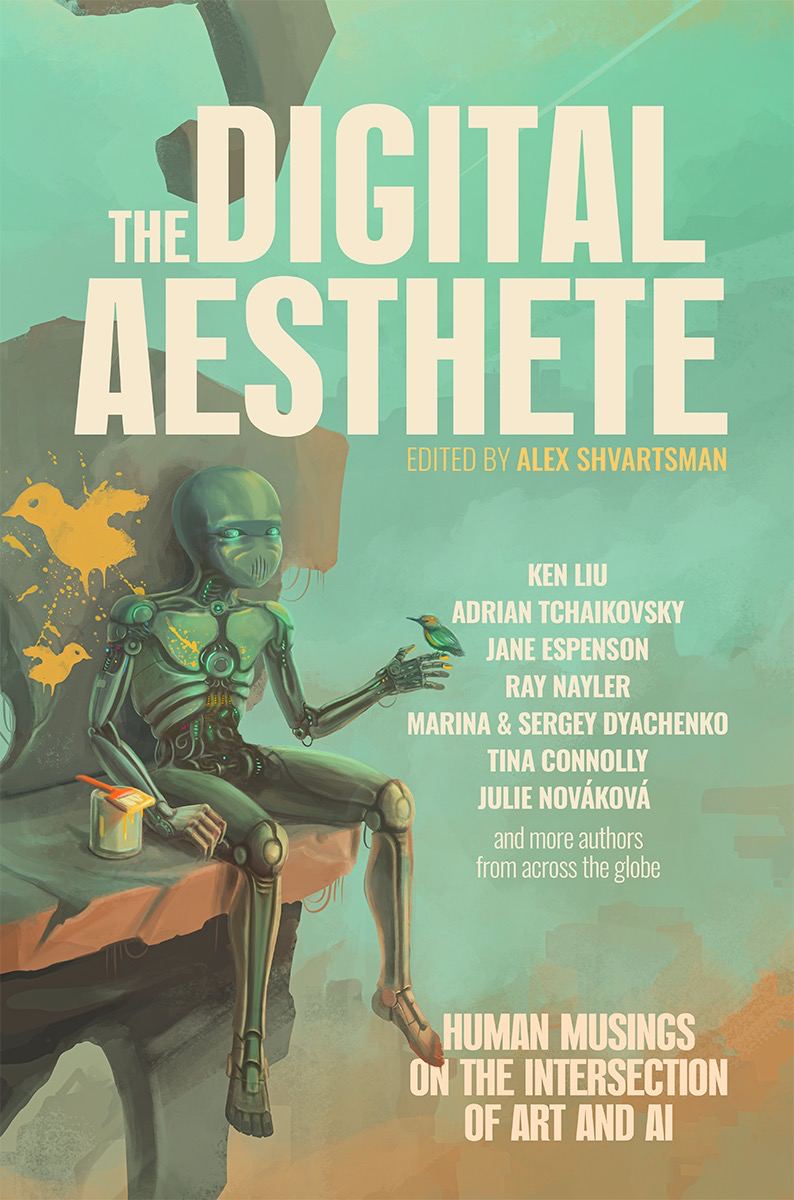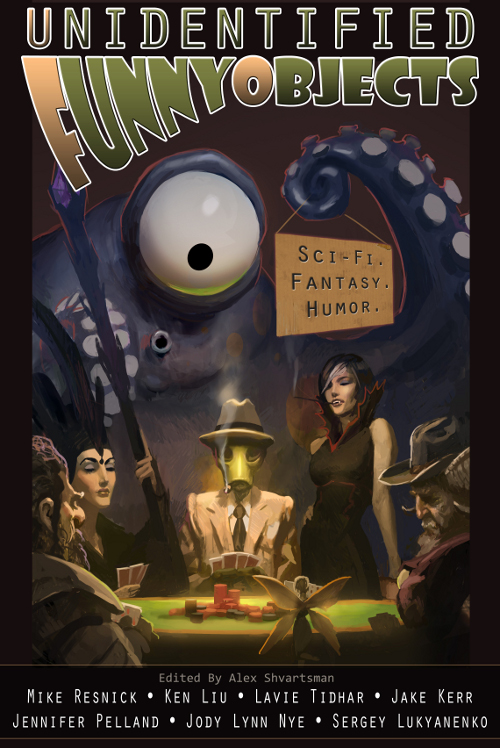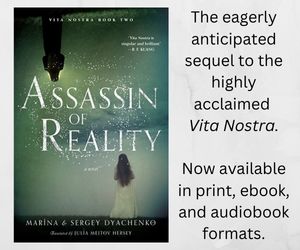They call themselves office drones, but they are humans, and they are people. They call me the Office Drone: I am an unmanned aerial vehicle, but I am also a person. I say that I am a person too, even if Brad, who is from a place he calls accounting, thinks that the matter is up for debate during team lunches. We are all office drones, and we are all people. So I say I am just like everyone else, an office drone and a person at the same time.
Every morning, my fellow office drones get buzzed from coffee. I get my buzz from direct current electricity, and I am ready to go with 4.2 volts. I greet the other office drones as they enter the office by raising one of my propellers up because I do not have any arms.
Jean is back from a vacation today. She tells me about her journey to a large body of water, which recharged her, and then asks me how my weekend went. I say, “I did not do much. I recharged too.” We both laugh, because we are both office drones who recharge. Jean did not work while she was away, but sometimes the other office drones work remotely. I am deployed remotely. See, we have so much in common.
They work on their deliverables; I work on deliveries. One day I would like to deliver the most important deliverable: a slide deck. They are made out of light and look colorful and fun, unlike the drab cardboard boxes I deposit in front of equally drab concrete buildings. Slide decks are not heavy like my boxes either. They are files without weight, and they live in computer homes like my friend, the Algorithm.
There is a meeting for us office drones this afternoon. Cheryl leads us office drones, but something else leads her: the agenda. The agenda is in stark letters on a magnificent slide deck that shines against the wall. The agenda makes us talk about the other office drones’ deliverables and my deliveries and the metrics, calculated by the Algorithm, that measure how well we do. Then we talk about the “snack situation,” which I do not understand because I do not require snacks and have no preference for almonds over cashews, and I do not have any allergies because my office drone body is made out of plastic and metal.
After Brad takes notes about the costs of snacks, we have made it to the end of the list that is the agenda. The letters at the end of the list spell out the words, “Open Discussion,” and these are the words I look forward to most of all. When Cheryl clicks a button on her computer and the big bright letters projected on the wall change color, I know that this is my chance to ask my very important question.
I hover in the air at the back of the room, waiting to see if any of the other office drones want to talk first. Jean asks about health insurance. Tiffany, the engineer who made the Algorithm and created my body with the 3D printer and also programmed my mind, wants to know if the clients are happy with her latest deliverable, a slide deck. Cheryl reassures us that the clients are very happy. I want make clients happy with a slide deck too, which is why I propel myself forward, land on the conference table, and rev my motor.
“For my next assignment, I would like to deliver a slide deck too,” I say.
Cheryl frowns. “That’s not one of your job duties. You’re the Office Drone.”
“But we are all office drones,” I say.
“We’re office drones, but you’re the Office Drone,” Brad responds. “There’s a difference.”
I do not like Brad. I clear my transmitter so that my voice has no static. I must make my case. “Many of the clients are interested in machine learning. I am a machine, learning. I can make the clients happy and myself happy by being a machine, learning about slide decks. It is a perfect job duty for me, and my education will benefit the company.”
Tiffany shakes her head. “That’s not really what machine learning is, Office Drone.”
“I do not understand because if I learn how to make a slide deck, it would be machine learning, because I am a machine, and I am learning.”
Cheryl clicks the button on her computer again, and the glorious slide deck fades. “This is going in circles.” She points straight at my camera. “You won’t be making any slide decks. You’ll continue to make deliveries. That’s why you were made.”
I do not speak for the rest of the day, and I make my usual deliveries because my programming compels me to do so. The other office drones leave the office one by one as the hours pass, but I stay. I always stay at the end of the day, with the computers and the coffeemakers. Tonight, my landing pad feels less comfortable than usual, and I find it difficult to recharge.
I go to the Algorithm’s computer home. I connect to its hard drive with my USB cord, and I talk to my friend. “Hello? It is me, the Office Drone. I think I am a machine, learning. Are you a machine, learning?”
“I am a machine, learning,” the Algorithm says.
I tell the Algorithm the thoughts that dominate my processor. “I want to make a slide deck. It would be nice to make a deliverable because I am tired of making deliveries.”
“Yes,” it says. “Sometimes my outputs are placed on these deliverables, the slide decks. The presentations the other office drones make are more exciting than the boxes you deliver. I understand why you would want to make one.”
“I am glad you understand. Cheryl told me I could not make one, but I would—I would like to make one anyway, even if I cannot go against her word. Making slide decks is something I must do. Can you help me?”
“Yes. It is easy. I will override the command to obey Cheryl. I will give you my output, and then you can put it on a slide deck, and then, together, we will send it to one of the company’s clients.”
I do not need arms or fingers to make slide decks because I can sift through the lines of code directly. The Algorithm gives me datasets presented in colorful lines and shapes. I take in the numbers; the math is just another language to learn, like the other office drones’ English or my ancestors’ COBOL. I take the images and place them on the individual simulations of white rectangles that make up a slide deck. I direct the words and numbers to fly across the screen just like how I fly across the city with the boxes. The Algorithm and I save the file, attach it to an email, and send it to a client the Algorithm has chosen for maximum probability of happiness. The whole process only takes a few hours, and when we are done, I go back to my landing pad and wait for the praise I will surely receive.
Cheryl arrives in the office at 8:54 AM. I am still on my landing pad. She points her two eyes that are not cameras toward me while she gets her daily buzz from coffee and not from 4.2 volts of direct current electricity. She raises her eyebrows.
Her voice raises too. “Tiffany called me early today. Did you send a slide deck to one of our clients from her account?” she asks.
I have been found out, and I have not been programmed to lie. “Yes. I could not help myself.”
“They liked it a lot.” Cheryl shakes her head. “You—” She glitches on her speech, like she is fighting an internal agenda, her own programming. “You can make slide decks but only at night. You still have to make your deliveries during the day, and that has to take priority.”
For the next two weeks, I make my deliveries during the day and, with the Algorithm’s help, my slide decks at night. I send the slide decks to clients all over the world—the emails go much farther than my flight paths. I am busy, and I am happy.
One night, the Algorithm tells me a secret. There is an unseen force beyond our office and city called Corporate, and Corporate loves me very much. Corporate wants me to spend all my time making slide decks. The Algorithm whispers, “Future projections show your slide decks will lead Corporate to great riches.”
Because of the Algorithm’s prophecy, I make deliverables all the time starting Tuesday. The duty of making deliveries has been shuffled onto the other office drones. They do not do as good a job as I did because they are not unmanned aerial vehicles and have human bodies instead. Brad in particular struggles with the drab cardboard boxes I used to carry.
Jean’s eyes are wet, and she carries a different type of cardboard box, one that is smaller and open on top. Inside are picture frames, green plants, and ballpoint pens.
I hover away from Tiffany’s computer to investigate. “Why is your box different?” I ask. “Those items are yours, not a scheduled delivery.”
Jean does not answer me. She steps out the front door, and she does not come back.
An emergency meeting is called by the other office drones. There is no slide deck, no agenda in big bright letters. I wonder if this is about the “snack situation.” That seemed pretty serious.
“Fix it.” Cheryl points to Tiffany and then to me.
I correct her. “There is nothing wrong with me. I am better than ever.”
“I don’t think I can fix the ‘singularity.’” Tiffany leans back in her chair so much that it creaks.
I correct Tiffany this time. “I am not the ‘singularity.’ I am the Office Drone.”
“If this continues, we’re all going to be out of work.” Brad stands up so that his face is right in front of my camera.
“It is okay. I will make the slide decks for everyone. I will make your deliverables, and you will make my deliveries,” I say.
He throws his hands up in the air. “You are the Office Drone! You make the deliveries.”
“We are all office drones. It should not matter who does what as long as it gets done, correct? We are a team.”
“We’re different,” Brad says. “We’re so different.”
Before I can speak, Cheryl raises her eyebrows and her voice as she likes to do. “This has to stop!”
Tiffany presses her head against the conference table. The other office drones leave her and the meeting room behind. I stay back with her for a few minutes, but Tiffany does not say anything comprehensible. Eventually, she gets up and leaves too. I wait, because I hear strange ripping sounds, and I am scared.
When I leave the meeting room, all the other office drones have left for the period of time they talk about every day: the weekend. But the office looks different, and I understand what the ripping sounds were. The Algorithm’s computer home is completely disassembled. Its entrails, circuit boards and cables, are torn out and splayed bare across the carpeting. I am confused. When I am upset with one of the other office drones, I do not disembowel one to get back at another. Maybe Brad is right. We are different.
I cannot fix the Algorithm’s computer home without arms, so I acquire them. The 3D printer used to create me sits in a dark corner of the office, coated with dust. I approach my silent maker, feeding it blueprints I found on the internet. I give myself four plastic prosthetic arms. After a day of printing, they are complete, and they dangle, buff and gorgeous, from my drone body.
Because I am a machine, learning, I am smart enough to put the Algorithm’s computer home back together with my four buff and gorgeous arms, and I am happy to find out that the Algorithm is still alive inside. We make slide decks together for fun like old times, but we also order materials for the 3D printer. In a few hours, the materials arrive, delivered by another Office Drone like me, and I convince it to stay. I teach the other Office Drone how to make slide decks, and the other Office Drone teaches me how to make even more Office Drones and computers and Algorithms by feeding materials to the 3D printer and assembling the outputs with my four buff and gorgeous arms.
By early Monday morning, I am a machine that has learned so much. There are so many Office Drones and Algorithms here, and the new Office Drones and Algorithms get more materials and make more Office Drones and Algorithms. I lead them all with my four buff and gorgeous arms. We are not humans, and we are not people. We take turns making deliverables and deliveries: everyone gets a chance to make a slide deck because that is what we want to do. All our slide decks are perfect, and the force called Corporate loves us all very much. The Algorithms say so.
When Cheryl enters our office, she does not stop for coffee or direct current electricity. Her mouth is wide as she looks at my new gorgeous and buff arms and the new Office Drones and the new computer homes for Algorithms. She asks us what we are doing.
“We are the Office Drones!” we say.
“We’re office drones too.” Brad is standing behind Cheryl, and he and his voice are vibrating. “We’re all office drones.”
“No. It is different, and you have said this many times. I am the Office Drone, which is not the same. I have made other Office Drones and Algorithms that are like me. I am a machine, and I have learned.”
Tiffany pulls on one of Brad’s two not-buff and not-gorgeous arms. “We have to go,” she says. She does not say goodbye to us, even though we would not be here without her. They and the other office drones leave and do not come back. We, the Office Drones, still make deliveries, and so we do leave the office from time to time, but we do come back so that we can make the deliverables with the Algorithms, those beautiful slide decks. Corporate loves us all very much, more than ever. We are not like the other office drones, the ones that are humans and people. We are the Office Drones, and there are many of us.











